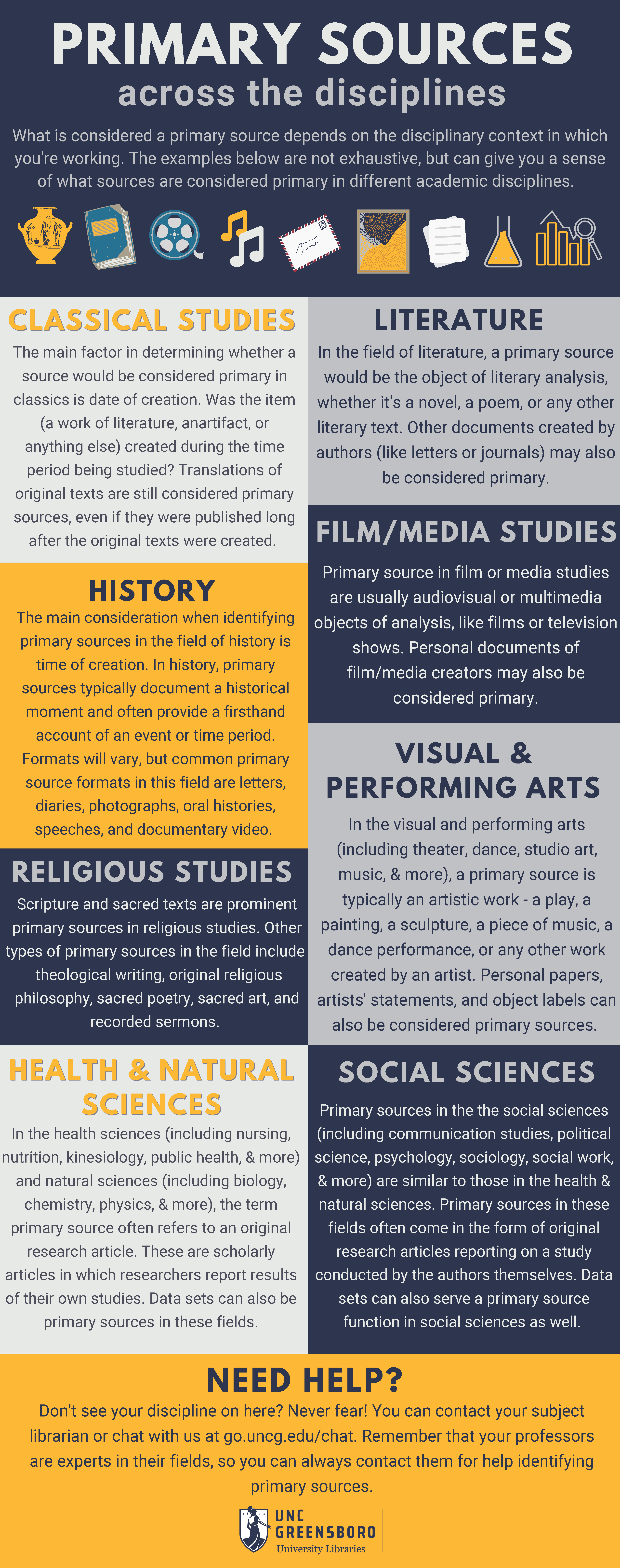Categorizing Sources by Type: Primary, Secondary, and Tertiary Sources
Another common way to categorize sources is by differentiating between three main types: primary, secondary, and tertiary. An important thing to keep in mind when doing this kind of categorization is that these categories are not fixed or permanent. For example, a scholarly article describing a research study might be considered a primary source in one discipline and a secondary source in another. Take a look at the infographic below for examples of primary sources in different disciplines:

PDF, machine readable version of Primary Source Infographic
Primary sources, regardless of the discipline, are usually sources in which the creator has some kind of direct connection to the content of the source. A letter or diary entry is often considered a primary source, for example, because the creator of the source is typically writing about their personal experience. Even when primary sources are used to refer to research studies, that creator connection is there - the people who conducted the original research are usually the authors of academic articles describing that research.
Secondary sources are typically going to lack that direct creator connection. For example, a historian might describe the same historical event discussed in the letter or diary entry mentioned above, but they didn’t experience that event directly and are analyzing it with the benefit of hindsight. Secondary sources often engage in interpretation or analysis of primary sources. Using the research study example mentioned in the previous paragraph, a secondary source might be a literature review that summarizes and/or evaluates the article describing the original research.
A third category, tertiary sources, are even a bit further removed from the original event or context. This definition from Cornell University’s Library explains this category well: “Tertiary sources are publications that summarize and digest the information in primary and secondary sources to provide background on a topic, idea, or event. Encyclopedias and biographical dictionaries are good examples of tertiary sources" (From Cornell Library Sources LibGuide). In addition to reference works like encyclopedias, textbooks are often considered tertiary sources.
Quick Check: